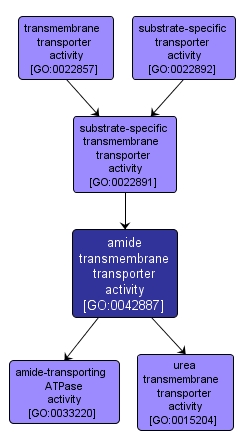GO TERM SUMMARY
|
| Name: |
amide transmembrane transporter activity |
| Acc: |
GO:0042887 |
| Aspect: |
Molecular Function |
| Desc: |
Enables the directed movement of an amide, any compound containing one, two, or three acyl groups attached to a nitrogen atom, from one side of the membrane to the other. |
Synonyms:
- amine/amide/polyamine channel activity
|
|

|
INTERACTIVE GO GRAPH
|














